This story was originally published in INSTORE in November 2005.
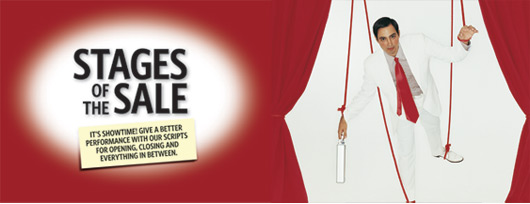
It’s here — the biggest selling season of the year. And for jewelry salespeople, holiday shoppers are often like a slam dunk. Easy money.
But not so fast. Most stores will see more new shoppers during the next two months than any other time of the year. Will shoppers remember their experience in your store? Are you prepared to do what it takes to transform them into customers for life? Or will you give them the “clerk” treatment — and probably never see them again?
Each step in the selling process presents both an opportunity to build an incredible customer relationship, as well as potential disaster for the unprepared salesperson. To help equip your team for the rigors ahead, Instore brings you tips and selling advice from the savviest minds in sales. From the best opening techniques, to handling the most common objections, to closing strategies with the potential to double your income, our experts weigh in on each stage with tactics proven to work on the sales floor time and again.
After all, what means more to your business — a single slam dunk, or a dominating performance in all areas of the game? Make certain your team is ready for a winning holiday season, and turn the page. It’s showtime!
Advertisement

START
GOAL OF THE STAGE: To get past customer resistance, create a person-to-person relationship, and start building trust.
BASIC PRINCIPLES OF THE STAGE
SALES EXPERTS agree that the first 30 seconds are critical to the success of any sale. Your job is to set the customer at ease and pave the way to begin your sales presentation. You won’t get there by using the traditional opening lines.
“Never ask a customer ‘Can I help you?’ You’ll always get the same response: ‘I’m just looking,’” says Brad Huisken, president of IAS Training and author of I’m a Salesman! Not a Ph.D. “Instead, open the sale with a meaningful, non-business conversation about current events, their jewelry, their kids, their car, etc.”
Advertisement
Your opening salutation can never be business-related, says Harry Friedman, retail consultant/trainer/speaker and author of No Thanks, I’m Just Looking! Instead, opening lines should be questions that encourage conversation — unique, sincere, or different enough to cause the customer to take notice.
Friedman advises that you assess the customer as they enter the store, not to qualify or pre-judge them, but rather to discover some sense of how to open the sale. Is the customer a neat freak? Is he sloppy? What type of watch is he wearing? Are his shoes shined? Does he have goop in his hair? “If he has goop in his hair, it says he’s interested in how he presents himself,” says Friedman. “And your opening line should take that into consideration.”
Why does your opening line have to be so personal? Because people aren’t looking for jewelry, they’re looking for a place and a person from whom to buy, says Huisken. Let the customer know that you can communicate on a person-to-person level, and their comfort level will rise tremendously.
Your next most important task is to sell yourself and your store. You should do this at least three to five times over the course of your presentation, says Huisken.
According to Friedman, the best transitional question after a few moments of person-to-person conversation is “What brings you into our store today?” This question is extremely open-ended, and will generally lead smoothly into the second stage — needs determination.
DOING A LITTLE EXTRA
Advertisement
CUSTOMERS AREN’T USED to a salesperson that really listens to what they’re saying. So listen, says Huisken. Many jewelry purchases revolve around highly emotional events. When they tell you why they’re in your store, congratulate them on their upcoming event. Take the time to ask them about it — their plans, what they’re expecting, how excited they are. You’ll find the extra time you take here exponentially increases your chances of closing the sale down the road.
Any approach into the space in front of customers may be viewed as a violation of personal space, says Friedman. Therefore, he advocates the “180 Degree Pass-By.” Have something in your hand as you make your approach. This gives customers the impression that you have something on your mind other than taking all their money, says Friedman. Walk near the customer, saying “Hello” or “How are you,” and walk past them. After three or four steps, turn around with a quizzical look on your face and say something like, “May I ask you a question?” The customer will generally take a few steps toward you and say, “Sure.” Now you’re off and running, and you’ve avoided the reflexive “just looking” statement.
THINGS TO AVOID
HERE ARE THE FIVE worst opening lines in selling, according to Harry Friedman:
• Can I help you?
• Are you looking for anything in particular?
• Can I answer any of your questions?
• Do you know about our sale?
• We just got that in. It’s really great, isn’t it?
When you get a “conversation buster” like “I’m just browsing,” or “I’m just killing time,” don’t respond with the following: “Just let me know if you have any questions, I’ll be over there,” or “My name is Harry if you have any questions.”
Friedman says that what the customer will actually hear is “My name is Harry, the SALESPERSON, and I’ll be right over here where SALESPEOPLE stand, in case you have any questions for a SALESPERSON who only wants to SELL you something you don’t want.”
WHAT TO DO IF YOU GET HUNG UP
WHEN A CUSTOMER says they are just looking, respond positively and with enthusiasm, say retail speakers/consultants Richard Fenton and Andrea Waltz. Then give the customer a 20-second “edu-merical” about the store, before setting them off on their own to “just look.” At that moment, many customers who didn’t want to tell you what they were looking for will engage your assistance because they won’t feel pressured.
Use the take-away — a technique used to defuse customers’ defensive shields. The take-away consists of two parts, according to Friedman: an agreement that it is okay to look, and an exact repeating of the customer’s defensive shield, but phrased as a question.
For example, you ask “what brings you in today?” and the customer responds:
Customer: I’m just browsing.
Salesperson: I love to browse, too. What are you browsing for?
Here’s another example:
Customer: I’m just killing time.
Salesperson: We all need a little more time to kill. What are you looking for while you’re killing time?
And one last one:
Customer: My husband’s just next door shopping.
Salesperson: So you’re on your own for a while. What are you looking for while he’s shopping?
BRAIN STORMS
Fresh Ideas From INSTORE’s “Brain Squad” |
|
Especially over Christmas, when the men come in, I love to kid them. I say “Look at all these gorgeous girls I have here to help you. Where else can you shop and be surrounded by such beauty?” They love it. — Marta Vanzandt; L. Morgan Jewelers
One salesperson often uses “Come on in and get _____.” (warmed-up, cooled-off, dried-off, or whatever, depending on the weather). Another salesperson likes to make a big deal over childern brought in the store and will start talking to the child as if they are the one shopping and brought the Mom along. — Craig Ishii, Van Drake Jewelers
“Welcome to a trip around the world. Tell me what you like to sip on while you brouse, cappuchino, expresso, wine, champagne, water, soda, or, on Saturdays, a mimosa?” — David A. Mazer; Bernie Robbins Fine Jewelry
“Please feel free to browse but if there is anything you’d like to model for me just give a holler.” That last one is my favorite but I can’t take full credit, it was used on me at a trade show. — Casey Gallant; Stephen Gallant Jewelers
“Good morning! What may we tempt you with?” — Kyle Hain; N.C. Diamonds and Gems
|
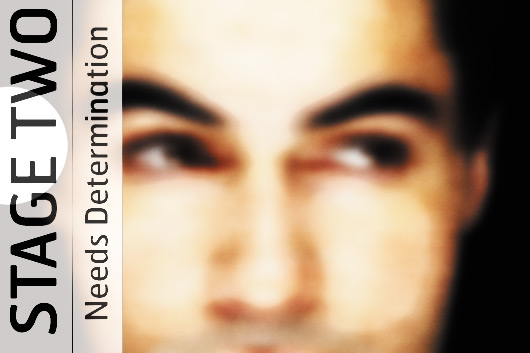
START
GOAL OF THE STAGE: To discover what brought the customer in to see you — to uncover their wants and needs.
BASIC PRINCIPLES OF THE STAGE
ASK OPEN-ENDED questions to engage the customer, say Fenton and Waltz. “These generally start with words like who, what, where, and our favorite — ‘tell me.’ As in, ‘Tell me about your ideal engagement ring.’”
According to Brad Huisken, the single most important question in sales is “What’s important to you in selecting X?” X, in this case, means the particular type of jewelry the customer is looking for. Their answer will be the foundation for your entire presentation. If they want “more flash for the cash,” you go emotional. If they specify color, clarity, and carat weight, it’s a technical sale. If they say, “I don’t have a clue,” they’re putty in your hands, says Huisken.
Don’t ask “what does she like, what does she have, or what do you want to spend,” says sales trainer and author Dave Richardson.
Such questions minimize the emotional impact of jewelry. Instead, remind the customer of the hoped-for reaction. If a man is shopping for an anniversary gift, ask him, “What have you surprised her with in the past?”
“A bracelet,” he answers.
“And what was her reaction?” you say. Or: “How did you feel?” Now you’ve got him reliving that moment, says Richardson. Follow with: “Let me show you how we can make that happen again.”
DOING A LITTLE EXTRA
One thing you can do now to impress a customer and show them how seriously you take your job of serving them — take out a little notebook and start writing down everything they say. They’re impressed … and you have a useful record of their tastes.
THINGS TO AVOID
NEVER ASK the customer their budget, says Richardson. “When you do this, you’re stuck. If he says $1,500, then you can’t show him a $2,000 ring he’d really like without looking like a jerk.”
Avoid closed questions until you are trying to get into details, advise Fenton and Waltz. For example, instead of asking “Is it for a special occasion?” you could ask “What is the special occasion?” Says Waltz: “Close ended questions are not bad — it’s just not where you want to start.”
WHAT TO DO IF YOU GET HUNG UP
HAVE TWO TO THREE questions ready to ask every customer. Harry Friedman suggests asking:
• Who are you shopping for?
• What features are important to you?
• What have you seen before that you really liked?
• When is the special occasion?
• When did you decide that you had to have one?
If you’re still at an impasse, pretend you’re shopping with a friend or a relative, say Fenton and Waltz, and think about what types of things you’d ask to help them shop.
BRAIN STORMS
Fresh Ideas From INSTORE’s “Brain Squad” |
|
Taking the humorous approach sometimes works with me. “How can I get you into or out of trouble?” — Phil Pancer, Ring Leader Fine Jewelers
I’ve developed a notepad … a checklist which includes metal type, diamond size, finger size, diamond shape, budget, etc, so we always cover all bases for an engagement ring purchase. — John P. Kuehn; John P. Kuehn Fine Jewelers
Ask them what they want this gift to ‘’say’’. — Blanche and Luke Schmidt; Schmidt Jewelers
If a man enters carrying a bag from the card store, start with “Well, you have the card. Now you just need the gift! So what’s the occasion?” — Roseanne Kroen; Great American Diamonds and Gold
The two key questions to ask for a repair project: how long they’ve had it and if they wear it every day. Leads to a sale every time. — Diane Petheriotis; Ragnar Jewellers Design Studio
|
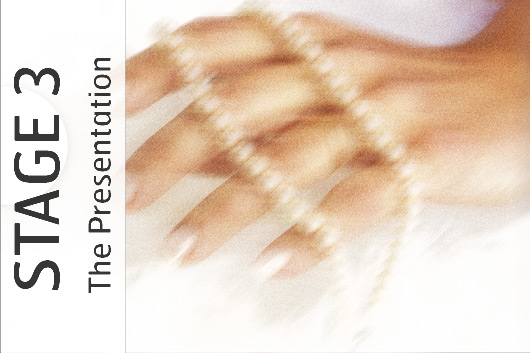
START
GOAL OF THE STAGE: To establish the value of the merchandise in the customer’s mind, and create a desire within the customer to own it now.
BASIC PRINCIPLES OF THE STAGE
NOW IS THE TIME to use the information you’ve gathered and make recommendations. Romance the product both physically and verbally. Say Fenton and Waltz: “You want to treat the product — the way you hold it, the way you pull it out of the case — as if each piece were worth a million dollars.”
As you present your product, speak to the customer in down-to-earth fashion. “Jewelry salespeople tend to speak in a foreign language,” says Huisken. “Customers won’t admit that they don’t know the difference in settings, or what is a karat vs. a carat. And, they don’t enjoy feeling stupid.” When mentioning a product feature, always give the benefit in layman’s terms. For example, “This ring is channel-set, which means your diamonds will be very secure. That’s pretty important for you, isn’t it?”
DOING A LITTLE EXTRA
INVITE YOUR CUSTOMER to touch the product, try it on, feel its quality. “This is particularly effective when the sales counter is eliminated as a tangible and psychological barrier,” says Friedman. “If your situation permits, walk around to the customer’s side and stand next to him or her while showing the product. Customers may perceive your behavior positively, as a willingness to give service.”
THINGS TO AVOID
DON’T RECITE every product feature up front, leaving yourself without anything to say when the customer inevitably objects, advises Friedman. Instead, hold back your best demonstration points. Later, you’ll have some huge benefits left that will push the customer over the edge.
Don’t compare items. Putting down an item is like saying you have items in your store that aren’t good, says Friedman. And, comparison is subjective. Instead, focus on the value inherent in each item — pointing out difference in the advantages of each, while avoiding the trap of saying one is better.
Don’t remind the customer you’re a salesperson, says Huisken. Avoid all words or phrases that salespeople typically say, like “If I can give it to you for $100 less, would you buy it today?”
WHAT TO DO IF YOU GET HUNG UP
“MANY SALEPEOPLE think they have to keep selling and talking because if they don’t, the customer will leave,” say Fenton and Waltz. “Once you’ve completed your presentation, be quiet! Give the customer a few moments to think. It feels awkward at first, but often this is all it will take for the customer to decide to buy.”
BRAIN STORMS
Fresh Ideas From INSTORE’s “Brain Squad” |
|
Don’t show the jewelry too quick. Make sure you’ve done needs determination properly, so that you’ve pinpointed exactly what the customer wants. Then, create a little mystery and anticipation by polishing the piece as you’re telling the customer how perfectly it suits his or her needs. Finally, put it in the customer’s hands. — Jennifer McFadden; Joel McFadden Designs
Pick a more expensive piece first. A lot of times what you show first is what you sell, so choose carefully. — Doug Meadows; David Douglas Diamonds & Jewelry
I never wait for a customer to ask to see a product. I simply follow their eyes and pull that peice out and put it in their hands. I will say, “Can I see it on you?” rather than ask if they would like to try it on. — T Lee; T Lee Fine Designer Jewelry
We tend to limit choices to three for guys … and much more for women. (Sexist though it may seem…men are hunters, women are gatherers.) — Andy Koehn; Koehn & Koehn Jewelers
After we identify a few rings they might like, I bring out a slotted velvet tray. I say, “Why don’t we rank the rings you like? Your favorite in the first slot, and so on.” (It’s a good decision-making tool). — Eve J. Alfille; Eve J. Alfillé Gallery & Studio
|

START
GOAL OF THE STAGE: To answer customers’ stated or unstated objections by establishing value and trust.
BASIC PRINCIPLES OF THE STAGE
CUSTOMER OBJECTIONS can come at any stage of the sale, for any reason. According to professional sales trainer Leonard Zell, here are the top five objections in the industry today, paired with their appropriate responses:
Objection: I’m just looking.
Answer: I understand. While you’re looking, let me show you my favorite piece.
Objection: This is the first store I’ve been to.
Answer: Great! I’m very proud you selected our store first. Let me introduce myself.
Objection: Another jeweler has the same item for less.
Answer: Yes, I understand. It may seem it is for less. You may find out it’s actually only similar. Let me show you what I mean.
Objection: I have to talk it over with my spouse.
Answer: That’s great! Of course you want to discuss a piece of jewelry that will have so much meaning to her. Let me show you what will highlight it.
One of the most recently-added objections is, “I can buy it cheaper on the Internet.” Dave Richardson advises that you ask questions in response, such as the following (with explanation in italics):
• “Can you tell me what makes it so cheap?” The implication here is that cheap has another connotation — poor quality.
• “When you compared the diamond with the certificate, what did you find out?” Usually, the customer hasn’t checked the cert.
• “Why didn’t you buy it?” Clearly the customer was uncomfortable purchasing the diamond on the Internet or they would have made the purchase.
• “Is it a high F color, or a low F color?” The customer’s never heard this before, and now you can show your expertise.
THINGS TO AVOID
DON’T GIVE the perfect answer right away, advises Zell, lest the customer feel put down. Always acknowledge the importance of their remark first, which you can do by saying, “I understand.”
Never let your smile drop when a customer objects. “Salespeople have no idea they do this,” says Zell, “But the customer sees it and thinks ‘Aha! Now I’ve got you’.” Rehearse with your fellow employees to master this.
WHAT TO DO IF YOU GET HUNG UP
MANY OBJECTIONS cause sales people to turn and run to a less expensive or different style of product. Gather more information first, say Fenton and Waltz. “Just because the customer has an objection, doesn’t necessarily mean you’re on the wrong track.”
BRAIN STORMS
Fresh Ideas From INSTORE’s “Brain Squad” |
|
When someone has two things they like, but can’t decide (and one is more expensive than they wanted), I ask: “OK, ask yourself, which one , if I didn’t take it, would haunt me?” Works every time! — Eve J. Alfille; Eve J. Alfillé Gallery & Studio
When price is an objection, but I can see the customer is clearly in love with the item, I share my budgeting tip of bringing lunch to work to fund my jewelry obsession. That’s at least $25 a week of “found” money. — Monica Denning; JM Jewelry Designer
“First we’ll do a wax and then we’ll take it from there. Can you cover the cost of the wax today?” Usually that’s not a problem. — Phil Pancer; Ring Leader Fine Jewellers
We particularly reinforce the fact that we have a 14-day “no- hassle” refund policy. If we choose the wrong piece, she or he can exchange it or get a refund. There’s no gamble in the purchase. — Ronnie Godwin; Godwin Jewelers
Speak the truth. Don’t be defensive. If someone doesn’t like something nothing will convince otherwise. However, some may change their mind after trying a piece on, simply because they could not adequately visualize themselves in something. — Michael Hamilton & Sarah Hill; Hamilton Hill Jewelry
|
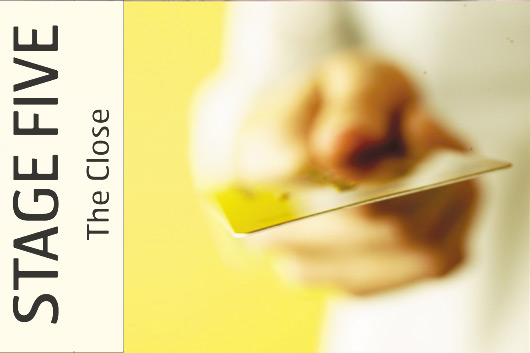
START
GOAL OF THE STAGE: To confirm the customer’s decision to purchase your product.
BASIC PRINCIPLES OF THE STAGE
THE SUCCESS of any retail business depends upon the ability of each salesperson to turn shoppers into buyers— which is what closing is all about. Closing the sale should happen from the very beginning of your presentation, not the ending, says Shane Decker, speaker and sales trainer for over 3,000 jewelry stores. “One of the secrets of closing is to ask lots of questions,” says Decker. “For every question you ask, take the customer’s answer, paraphrase it, and turn it into a reassurance close.”
Decker lists the following examples:
Salesperson: Is this for her left or right hand?
Customer: Left.
Salesperson: It’s always great to upgrade an engagement or wedding set.
Or:
Salesperson: Which metal does she prefer?
Customer: Platinum.
Salesperson: Oh, that’s awesome, she’ll be able to wear it all day every day for the rest of her life.
Reassurance closes like these make the customer feel it is okay to make the purchase, and get them ready for that decision. These should be used throughout the presentation, says Decker. “The close is a process and an agreement,” he says. “If you do it right, the customer won’t even be able to tell they’re being closed.” Decker says this is especially important with wealthy customers, who “hate to be sold but love spending money.”
Another type of close, says Friedman, is the either/or close — a question that discourages the customer from saying no to your request for the sale. You are offering the customer a choice, but either choice means the sale is done. Examples include “Would you like to pay by check or cash?” and “Should I gift wrap it to make it more special for you, or should I put it in a box?”
A third type is the reflexive close, which Friedman likes because it’s straightforward. When the customer asks a question, that question is then turned back on the customer. When the customer answers yes, you have an agreement to buy. Examples include:
Customer: Can you engrave the ring for me?
Salesperson: Would you like it engraved?
Customer:Yes, I would.
Salesperson: Okay, great. What would you like us to engrave on it?
Or:
Customer: Can the ring be finished by Saturday?
Salesperson: Would you like it by Saturday?
Customer: Well, I’ll be proposing to her on Sunday.
Salesperson: Awesome! I’ll make sure we wrap it up for you.
Then there’s what Decker calls the direct close, which means telling the customer directly to buy the item. It may require more courage, but Friedman says it can often be the most effective way to push the customer over the fence. These are best delivered with a bit of humor; most customers will appreciate your candor and enjoyment of the situation, says Friedman. Examples include:
• “Just go for it, you’re gonna love it!”
• “We have it today, take it home.”
• “Look, I know you want it. Why not put yourself out of your misery and buy it? I think you owe it to yourself.”
• “You say you can’t make up your mind? No problem, I’ll make it up for you. Shall I gift wrap it?”
DOING A LITTLE EXTRA
FRIEDMAN’S “ADD-ON CLOSE” endeavors to both sell an item and add on to it at the same time. It’s basically like asking, “What do you think about this with that?” The add-on close also gives you a place to go once you’ve solved an objection. Examples could include:
Customer: I’ve never worn platinum because all my other jewelry is gold.
Salesperson: I know the feeling, but this ring looks great on you. How about a pair of earrings to wear as an ensemble?
Or:
Customer: Are these diamond prices for real? I’ve never paid so much for anything in my life!
Salesperson: I’m afraid our prices are as low as you’ll find anywhere in town. It’s amazing, isn’t it? How about a mounting to go with your new diamond?
THINGS TO AVOID
CROSS THE “PENALTY CLOSE” off your list, says Friedman. The penalty close includes statements like “Our only sale of the year ends tomorrow,” “This is the last one we have in stock,” or “It probably won’t be here tomorrow.” These statements penalize your customer for wanting to spend money in your store. Obviously, this can be unpleasant for the customer and could convince them to visit another store.
Never say “can I” or “would you”… these can be answered with “no,” says Decker. Instead, say things like “check this out,” “look at this,” or “I gotta show you my favorite.”
WHAT TO DO IF YOU GET HUNG UP
TURN OVER THE SALE. The customer may not like the way you dress, your age, your gender, or even the color of your skin. Whatever the reason, when you make the T.O., Huisken says to tell your associate the reason for the T.O., the objection the customer gave, the price (whether you talked about it or not), and the details of the special occasion. For example, if a woman is showing a man something that’s too expensive, he’ll never admit he can’t afford it. He might say, “I need to think about it.” If you suspect this is a T.O. situation, here’s your response:
“Mr. Smith, let me introduce you to Rob in case I’m not here when you come back. Rob, this is Mr. Smith. He’s looking at watches in the $1,000 range for his wife’s birthday, and he wants to think about it.”
BRAIN STORMS
Fresh Ideas From INSTORE’s “Brain Squad” |
|
I like to skip asking for the sale by assuming it will happen. I’ll ask the customer if they will tell their friends about us when they ohhh and ahhhh over their new purchase. — Monica Denning; JM Jewelry Designer
“We offer 90 days same as cash, let me get an application.” The buyer will either agree to fill it out, or say, “No, I’ll use my card”, and you know you have the sale. — Rosanne Kroen; Great American Diamonds & Gold
When she has on the necklace and says, “Oh, I really do like it,” and is silent for a couple of seconds. Then it’s time to say, “Can I box it for you?” Never use the line “Will that be cash or credit?” before the customer indicates they definitely want the item. It assumes way too much and is kind of slimy. — Casey Gallant; Stephen Gallant Jewelers, Inc.
I always tell them that they won’t have to take the piece off, I can remove the tag while it’s still on. — Dan Greiner; Blue River Jewelry
I use reverse psychology on my more intense customers. I say “Look, if you need time to think, don’t buy today. I want you to be happy with your purchase.” For some reason, that works for me. All of a sudden, the pressure is off, and they take it. — Marta VanZandt; L. Morgan Jewelers
“Won’t you feel beautiful every time you put this on?” — Marta Jones-Couch; Elements, Ltd
|
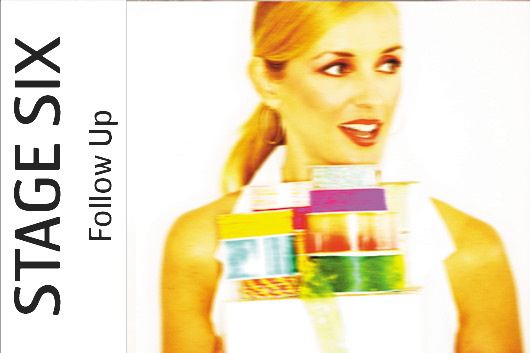
START
GOAL OF THE STAGE: Build the client relationship, establishing rapport and a foundation for servicing their future jewelry needs.
BASIC PRINCIPLES OF THE STAGE
SALES EXPERT Tim Connor sums up the grim realities of this stage: “Good follow-up is almost entirely absent in today’s retail environment, so anything a salesperson does in this stage is perceived as going the extra mile.”
In a retail environment ripe with opportunities to outdo your competitors, Harry Friedman offers a caveat. Sales associates should always ask permission. “If the customer gives you permission, they’ll always remember this gesture,” Friedman says. “If not, there’s really nothing you can do.”
For example, you could say, “Mr. Smith, I’d love to continue to be your jeweler. From time to time, something will pop up, like a VIP event I’d truly like to make you aware of. Where would be the most convenient place for me to call you, and what time of day is best? I don’t want to bother you, I just want to get to know you better.”
Friedman also strongly encourages thank-you cards. “Store owners should not pay commission until the thank you card is written,” Friedman says. “Because the sale’s not closed until that card is sent.”
To start getting in the habit of writing thank-you notes, Connor suggests sales associates get “a large stack of inexpensive thank-you cards at a local stationery store and always make sure the cards are hand-written.” Friedman agrees: “While a typewritten card is better than nothing, a handwritten note trumps it by 50 times.”
Good follow-up also means serving the customer by asking for the add-on sale. The add-on can come at any time during a sales presentation, or even after it. “Always show the customer additional merchandise, if not for today, then for next time,” say Waltz and Fenton.
There are three possible add-ons, according to Shane Decker: the matching add-on, the step-up add-on, and the service counter add-on. Each provides an opportunity to dramatically improve your commission check while serving your customer to the fullest.
Use a lead-in line to introduce the add-on, says Decker. Never ask permission, just assume the customer wants to see it. Possible lead-in lines include:
• “Ooh, I’ve gotta show you something before you go.”
• “Oh, that’s part of a set! Here are the earrings that go with it.”
• “I gotta show you what goes with this one.”
The add-on can even help close the initial sale, says Decker. For example, you might say, “Well, since you’re looking at this, I’ll show you the diamond earrings that go with it, and we’ll take care of both at the same time.”
DOING A LITTLE EXTRA
IF BASIC FOLLOW-UP will impress a customer, going beyond the rudimentary level will completely blow a customer away. After the sale, it’s not uncommon to drop in a few complimentary items such as jewelry cleaner, but “a salesperson should work with the store owner to capitalize on today’s more commonly given specialty items such as mouse pads, coffee mugs or nice writing pens,” says Connor. “The trick is to do something original. Try a bouquet of balloons or flowers.”
Know your customer and send unique, personal gifts you know they’ll appreciate, says sales expert Warren Greshes. “If a customer is into boating, forward an interesting article found in a newspaper or magazine on boating,” says Greshes. “Include a note — always hand-written.” Days later, call to confirm receipt of the article, and finish with a “by the way” question. This will get you important feedback, while setting up future store visits and possible purchases. These questions could include:
• “Did your wife like the jewelry you got for her birthday?”
• “Don’t forget about your six-month free jewelry cleaning and inspection. Call me in June!”
• “We got some new diamond jewelry in that might go well with that diamond ring, stop by the store when you have time!”
Become the customer’s personal jeweler through follow-up, says Richardson. When their anniversary or their wife’s birthday is coming up, call and say, “I have a pair of earrings your wife will love.” You’ll be surprised how often you hear, “How much are they? Send them over!” They don’t have time to shop, and you’re saving them the hassle.
THINGS TO AVOID
“DON’T INSULT the customer by assuming they don’t want to buy anything else,” says Dave Richardson. “They’ll let you know when they’re through buying.” Waltz and Fenton add, “Don’t ask, ‘Is there anything else I can show you?’ because that will likely end up with a quick trip to the register.”
Leonard Zell warns to avoid writing the sales slip up too quickly as that closes the sale in the customer’s mind — and eliminates your chance for the add-on. “You know the first item is closed when the customer confirms he or she likes it, or at least imply that they want it,” says Zell. “Now introduce the add-on. They’ve already made the decision to buy one item, so they’re in a good buying mood — it’s up to you to capitalize on it!”
Selling styles vary when it comes time for the follow-up. When sending a thank-you card, Friedman emphasizes the sentiment should be an opportunity to express appreciation. “Thank you cards are not selling opportunities,” he says. “Don’t include your business card or anything that ‘sells.’
BRAIN STORMS
Fresh Ideas From INSTORE’s “Brain Squad” |
|
For special-occasion shopping, think ahead and have something in mind for the next time. Make a note to yourself to write, email or call the customer a few weeks before the event and remind them of their previous purchase, then make your suggestion. — Jennifer McFadden; Joel McFadden Designs
Give something to your customer’s child. Maybe a genuine small birthstone. They’ll be back for a piece of jewelry to put it in when the child’s birthday rolls around! — Patti Henderson
I try to set up the add-on before the first sale. I simply say, “Before we finish today, be sure and remind me to show you something new that I think you will love.” Many times the customer will remind you themselves. — Keith Lewis; Goldrush Jewelry
“We look forward to hearing about the wonderful comments you get from others when you have it on.” — Brenda Newman; The Jewelry Source
Remind them of our referral program that has benefits for their next purchase. — Laurie Pfitzer; Artistry in Gold
Around the holidays I like to ask, “Now, is there anyone else we might be able to cross off your list today?” — Casey Gallant; Stephen Gallant Jewelers
“While you’re here, why don’t we create a wish list for you? This way you are sure that when someone special in your life wants to do something nice for you, it will be something you love and need!” — Eve J. Alfille; Eve J. Alfillé Gallery & Studio
|